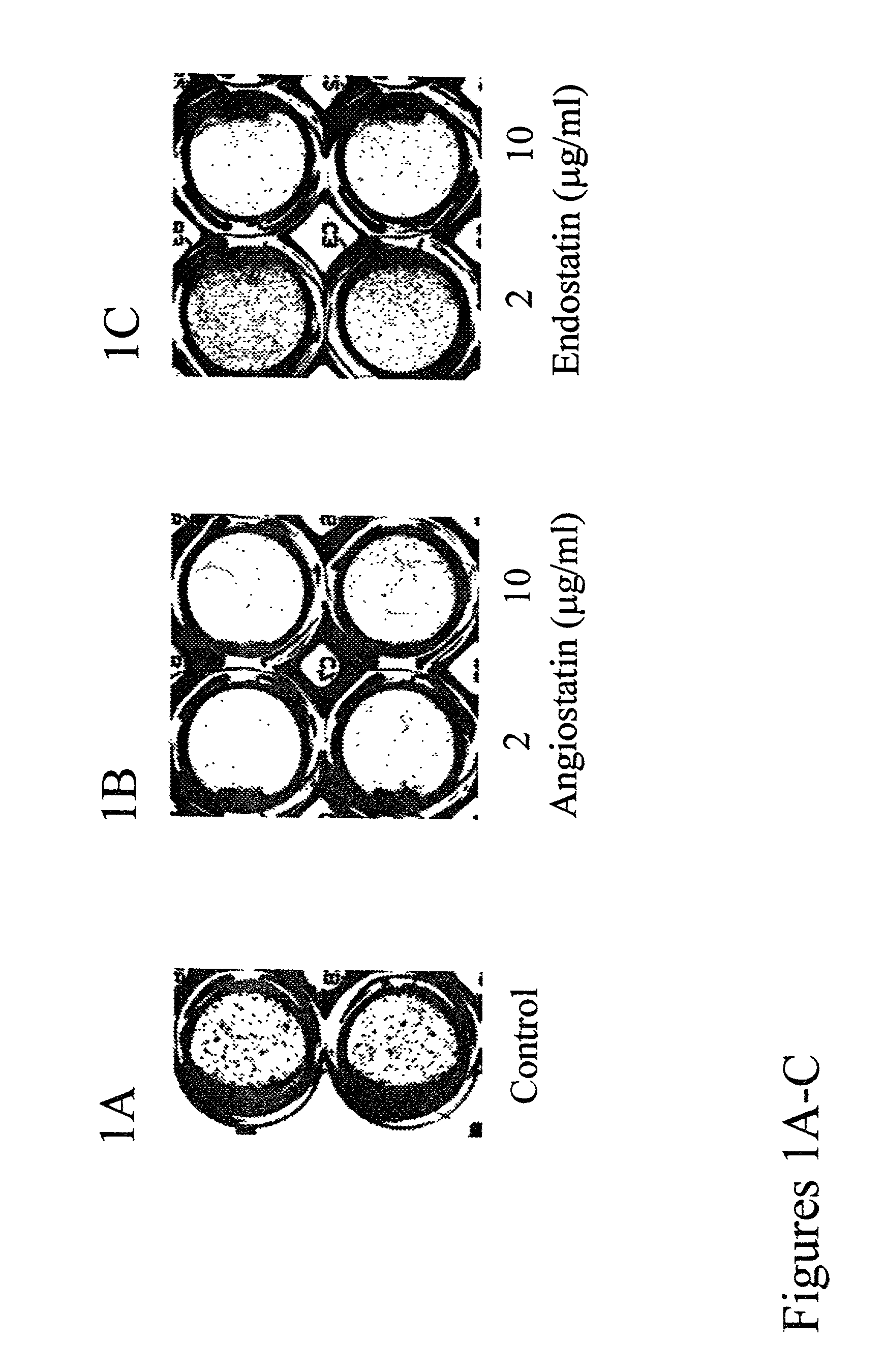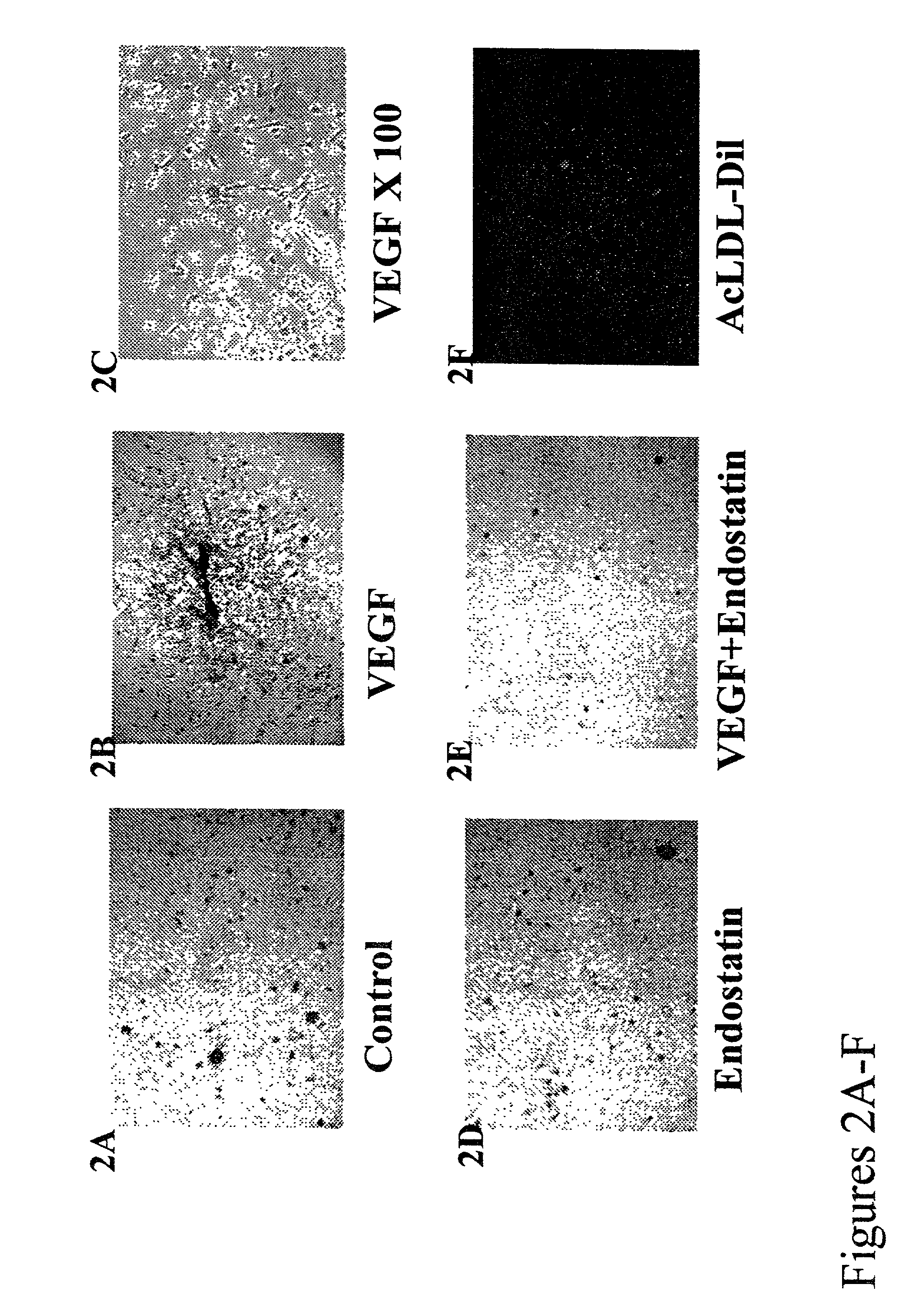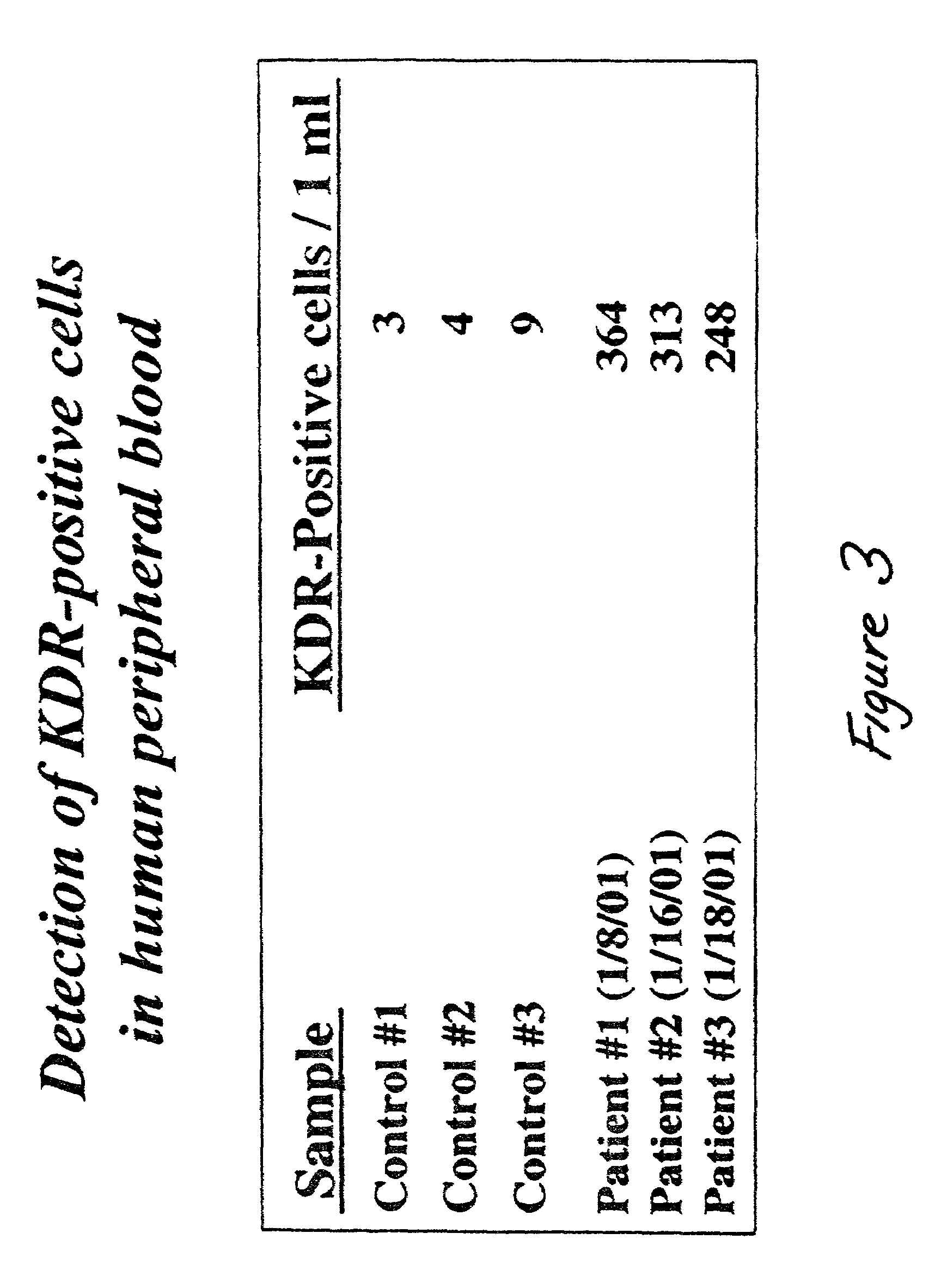Methods for assessing antiangiogenic agents
a technology of antiangiogenic agents and methods, applied in the field of antiangiogenic therapy, can solve the problems of time-consuming process of preparing specimens for histology and counting vesicles, difficulty in reproducing methods, and limited application of this techniqu
- Summary
- Abstract
- Description
- Claims
- Application Information
AI Technical Summary
Benefits of technology
Problems solved by technology
Method used
Image
Examples
examples
Angiostatin and Endostatin Inhibit In Vitro Formation of Colonies from Human Peripheral Blood
[0040]Human peripheral blood mononuclear cells (PBMNC) were purified over Ficoll gradient and seeded onto non-treated plastic dish for 24 hr. Non. adherent cells were, transferred to a gelatin coated 48 well dish in medium containing basic fibroblast growth factor (BFGF) and VEGF. Angiostatin and endostatin were added to the medium 24 hours later and cells were cultured for additional 6 days. At the end of the experiment the colonies were fixed with ethanol, stained with methyl-methylene blue and counted (FIGS. 1A-C). In the absence of antiangiogenic factors (FIG. 1A), large number of colonies containing elongated cells were formed. Angiostatin at 2 and 10 μg / ml completely blocked the formation of PBMNC colonies and only small aggregates of round cells were observed (FIG. 1B). There was no difference in the effects of angiostatin between the two concentrations used. Endostatin, on the other ...
PUM
 Login to View More
Login to View More Abstract
Description
Claims
Application Information
 Login to View More
Login to View More - R&D
- Intellectual Property
- Life Sciences
- Materials
- Tech Scout
- Unparalleled Data Quality
- Higher Quality Content
- 60% Fewer Hallucinations
Browse by: Latest US Patents, China's latest patents, Technical Efficacy Thesaurus, Application Domain, Technology Topic, Popular Technical Reports.
© 2025 PatSnap. All rights reserved.Legal|Privacy policy|Modern Slavery Act Transparency Statement|Sitemap|About US| Contact US: help@patsnap.com



